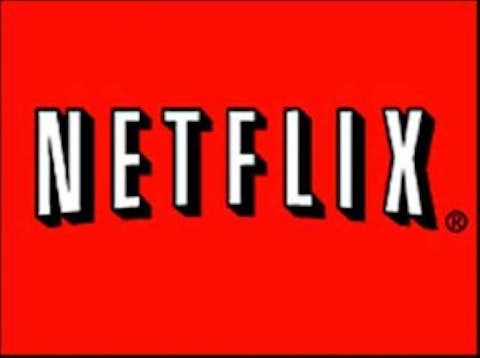
At the same time, it appears the company’s recently released first-quarter results missed expectation, and as a result, shares are lower in the wake of the report.
Despite a wildly popular service with millions of satisfied customers, Netflix, Inc. (NASDAQ:NFLX)’s earnings report and corresponding stock decline serve as a reminder of what so often happens when a skyrocketing stock price meets irrational expectations.
When valuation and rising expectations collide
Many investors may be scratching their heads in the aftermath of the company’s earnings results. It’s not entirely unreasonable to be confused, because on the surface, 20% revenue growth and quadrupled year-over-year earnings per share look outstanding. Most companies would love to boast that type of growth.
Unfortunately, this is yet another occasion when investors are rudely reminded of the crucial importance of valuation. Netflix had been on fire over this past year, soaring from $92 per share at the beginning of 2013 to its recent high of nearly $270 per share. Its valuation, and consequently future expectations, rose along with its share price.
That’s why investors shouldn’t be surprised that the stock slumped after hours, even with the impressive underlying results. This is how Wall Street expectations often unfold: institutional investors fall in love with a company, then send the stock, along with their future expectations, to unsustainable levels.
Netflix, Inc. (NASDAQ:NFLX) added 630,000 streaming customers in the United States? Too bad—analysts wanted 700,000.
Ignore valuation at your own risk
To be fair, Netflix isn’t the only stock on a huge uptrend that has placed its investors teetering atop dangerously high expectations. Social media site LinkedIn Corp (NYSE:LNKD) exchanged hands for $93 per share after its heavily publicized 2011 initial public offering. Since then, the stock has gone on a nearly uninterrupted run to $200 per share.
This came right alongside dramatic increases in users and revenue. As of the company’s last quarterly results, the website boasted more than 225 million members. Moreover, LinkedIn booked 72% revenue growth in the first quarter, year over year.
LinkedIn Corp (NYSE:LNKD) also generated huge growth in full-year 2012, with revenues and diluted EPS skyrocketing 86% and 72%, respectively. That being said, LinkedIn amassed a grand total of $0.19 per share in diluted earnings. That means that investors are paying more than 1,000 times 2012 earnings.
Online retailing juggernaut Amazon.com, Inc. (NASDAQ:AMZN) is adored by millions and has an incredible growth story. The company has grown to a market value of nearly $140 billion and its shares trade for more than $300 per share, up from $250 per share at the start of the year. Amazon’s sales have grown at an amazing clip. To illustrate, consider that Amazon racked up 27% sales growth last year.
However, despite a stunningly large market value and huge revenue growth, Amazon is not consistently profitable. Amazon lost money last year, despite racking up $63 billion in sales.
That’s why investors shouldn’t be surprised that Netflix, Inc. (NASDAQ:NFLX) is down in the wake of its disappointing, albeit impressive, results. Of course, Netflix bulls will point to the fact that future earnings growth will be such that today’s exorbitant valuation isn’t as bad as it seems. In a sense, the stock will grow into its rich valuation with stunning growth in profits.
However, even when accounting for huge growth in the near future, these stocks still trade for sky-high valuations that should make investors nauseous. LinkedIn Corp (NYSE:LNKD), Amazon, and Netflix trade for forward P/E ratios of 93 times, 95 times, and 85 times, respectively.
We’ve seen this movie before
Investors would be well-served to remember that Netflix, Inc. (NASDAQ:NFLX) has gone on this kind of a rollercoaster ride before. The stock went from $50 per share in January 2010 all the way to nearly $300 per share by July 2011. Analyst and investor expectations rose along with the stock price on broad optimism over the company’s supposedly unstoppable growth trajectory.
Then, as is now routinely common, Netflix’s subscriber and revenue growth failed to meet the irrationally exuberant expectations embedded in such a dramatic rise in share price. The stock proceeded to decline all the way down to $63 before the year was over.
Put simply, the time to buy is not after a stock has already doubled or tripled. For prudent investors who take risk management seriously, the risk of missing out on additional upside after such a strong rally is often much lower than the risk of buying in just before a decline.
Netflix, Inc. (NASDAQ:NFLX), LinkedIn, and Amazon are all extremely popular companies with millions of satisfied members and services. I have utilized their services many times, and would be the first to admit that each company revolutionized its respective industry.
At the same time, however, successful investing isn’t about jumping on a bandwagon. Investors would be wise to remember that even great companies can amount to poor investments over time if too high a price is paid for a stock’s underlying profits. And, with respect to Netflix, as well as Amazon and LinkedIn Corp (NYSE:LNKD) for that matter, future earnings growth is simply not likely to justify the dangerously high prices investors are paying today.
The article Why Investors Should Not Subscribe to This Growth Stock originally appeared on Fool.com and is written by Robert Ciura.
Robert Ciura has no position in any stocks mentioned. The Motley Fool recommends Amazon.com, Inc. (NASDAQ:AMZN), LinkedIn, and Netflix. The Motley Fool owns shares of Amazon.com, Inc. (NASDAQ:AMZN), LinkedIn Corp (NYSE:LNKD), and Netflix, Inc. (NASDAQ:NFLX). Robert is a member of The Motley Fool Blog Network — entries represent the personal opinion of the blogger and are not formally edited.
Copyright © 1995 – 2013 The Motley Fool, LLC. All rights reserved. The Motley Fool has a disclosure policy.




